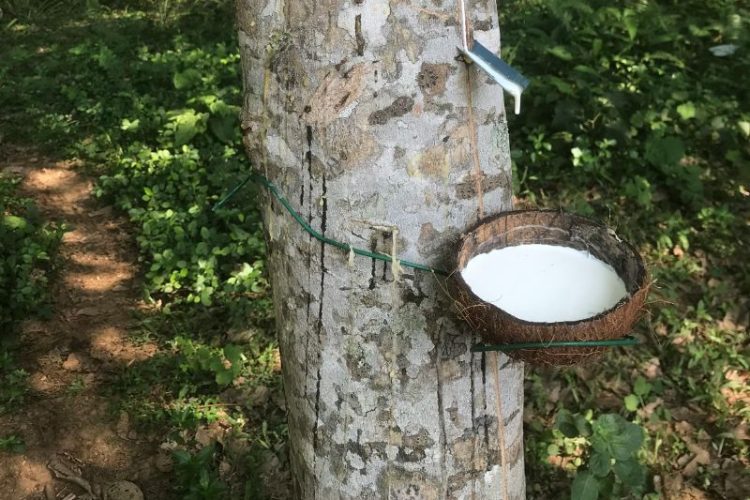Thanks to the EU-Vietnam Free Trade Agreement (EVFTA), importing rubber from Vietnam into the EU has become much simpler. Reduced tariffs and streamlined paperwork are a big help for importers. At the same time, the EU Deforestation Regulation (EUDR) introduces new rules, mainly around traceability and sustainable sourcing.
If you’re looking to import rubber or rubber products from Vietnam, the key questions are: how do you comply with EUDR, and how do you take full advantage of EVFTA? This guide on how to import rubber from Vietnam will walk you through the essential steps and offer practical tips for finding reliable suppliers.
Overview of Vietnam’s Rubber Export Industry
Vietnam is the third-largest producer and exporter of natural rubber globally, right after Thailand and Indonesia. It exports almost two million tons each year, which is about 17.4 percent of global trade.
While Vietnam isn’t the EU’s top supplier, it remains a steady source. On average, the EU imports around 470 million dollars’ worth of rubber from Vietnam each year, making it the twelfth-largest non-EU supplier. In the first six months of this year alone, the EU imported roughly 20,000 tons, valued at nearly 40 million euros.
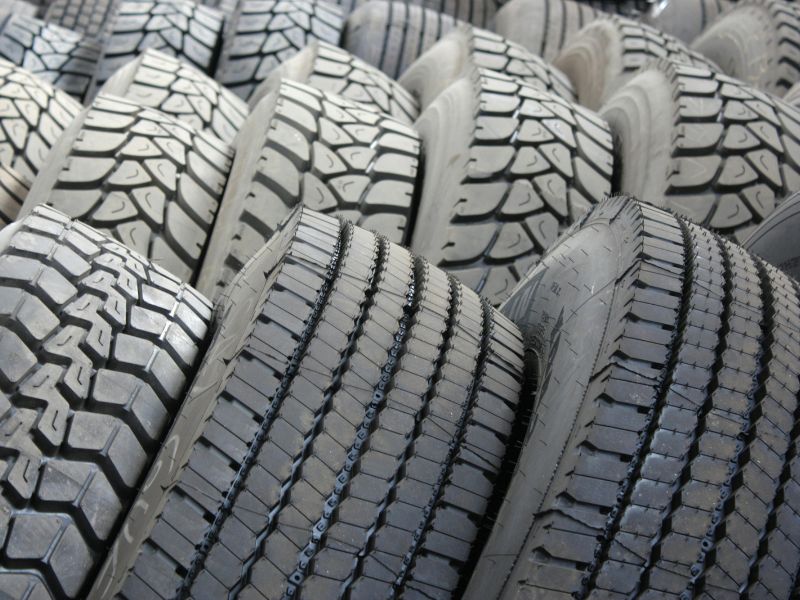
Benefits of Importing Rubber from Vietnam to the EU
There are several reasons why Vietnam has become an attractive source of rubber for European importers:
- Vietnamese rubber is classed as “low-risk” under the EU Deforestation Regulation. That means only about one percent of shipments get checked, instead of three or nine percent for higher-risk countries. In practice, this makes customs clearance faster and less costly.
- Supply is also reliable. Vietnam has over 930,000 hectares of plantations producing more than one million tons of rubber each year, which means a steady and diverse flow of products. You can source natural rubber grades like SVR3L, SVR10, and SVR20 for tires and conveyor belts, latex concentrate for gloves and sports equipment, or compound rubber for everyday household goods.
- Vietnam is moving up the value chain. Instead of just raw materials, more suppliers are now producing finished goods such as tires, gloves, mats, and other rubber-based products. These higher-value items can give you better profit margins while being ready for resale or industrial use.
- Traceability is also improving. Many Vietnamese suppliers are going after certifications like FSC or offering EUDR-ready rubber with full supply chain tracking, which helps you feel more confident during audits, reduce compliance risks, and strengthen trust with your own customers in the EU.
- The EU-Vietnam Free Trade Agreement is cutting tariffs. Some items, like rubber joints and hoses, are already duty-free. Conveyor belts will see tariffs drop gradually, and most core products, such as tires and medical gloves, now enjoy zero import duties.
Popular Types of Rubber Products You Can Import from Vietnam
Vietnam exports three main rubber product groups: natural rubber, rubber-based products, and rubberwood items. Tires are a big part (they use nearly 70% of Vietnam’s natural rubber output), so that segment is growing fast. Demand has also been rising for automotive parts, mattresses, and shoe soles.
1. Tires and Automotive Parts
Tires are a major part of trade between Vietnam and the EU. Last year, Vietnam moved ahead of China to become the third-largest exporter of truck and bus tires to the EU, with shipments at around 275 million dollars, making up over sixteen percent of the EU’s total imports in that category. Vietnamese tires are trusted for handling heavy loads, gripping well even in wet or snowy weather, and dealing with high heat in summer.
You’ll also find many rubber components for cars coming out of Vietnam, like seals, bushings, engine mounts, and vibration isolators.
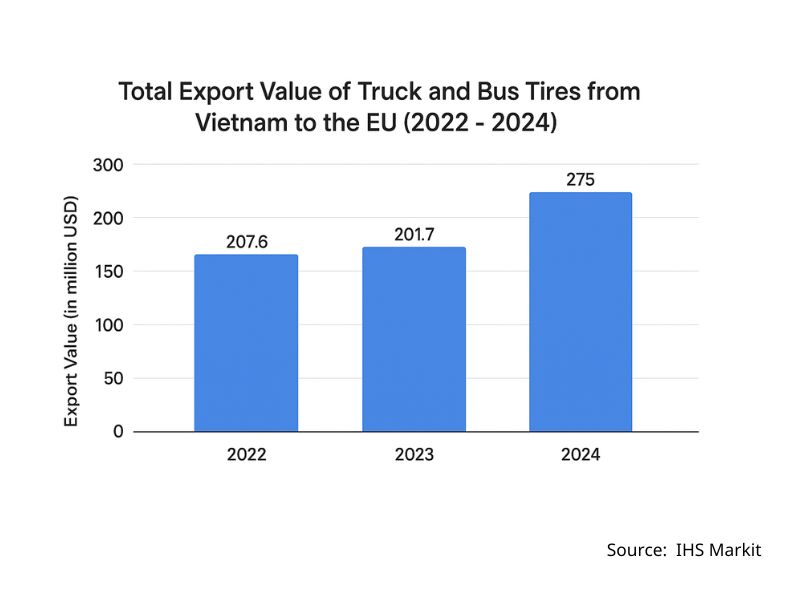
2. Footwear & Shoe Soles
Vietnam makes all kinds of shoes: sneakers, sandals, flip-flops, rubber boots, plus soles and insoles. Factories here use materials like EVA (light and flexible), SBR (durable and shock-resistant), and polyurethane (waterproof, slip-resistant). Brands like Puma and Dr Martens have part of their rubber-soled shoes made in Vietnam.
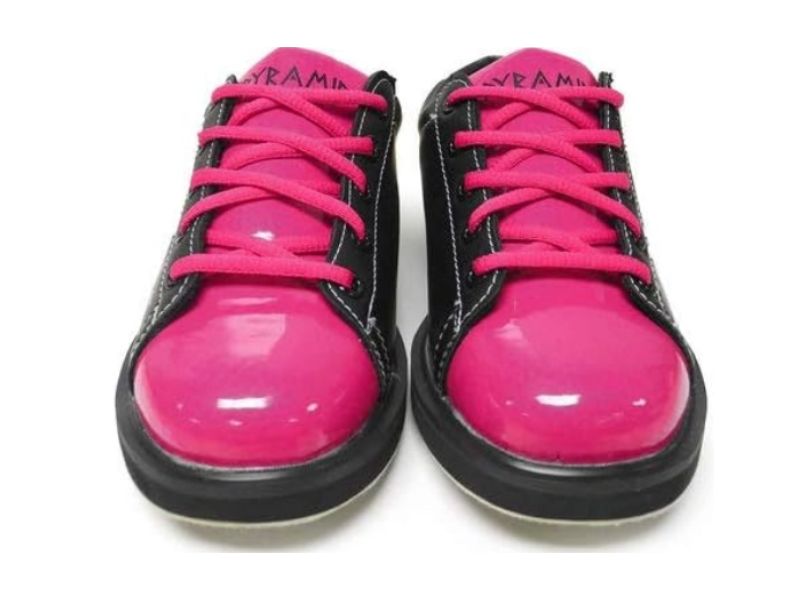
3. Mattresses
Vietnam is also well known for its natural latex and organic mattresses, which you can find in more than 40 countries, including across the EU. The product range is quite broad, from spring and hybrid models to foam mattresses, made for both adults and children.
Well-established brands like Kymdan and Lien A have gone through strict international testing. Certifications such as LGA Tested Quality show that their mattresses are durable and comfortable, while ECO Tested Product proves the materials are clean and safe for everyday use.
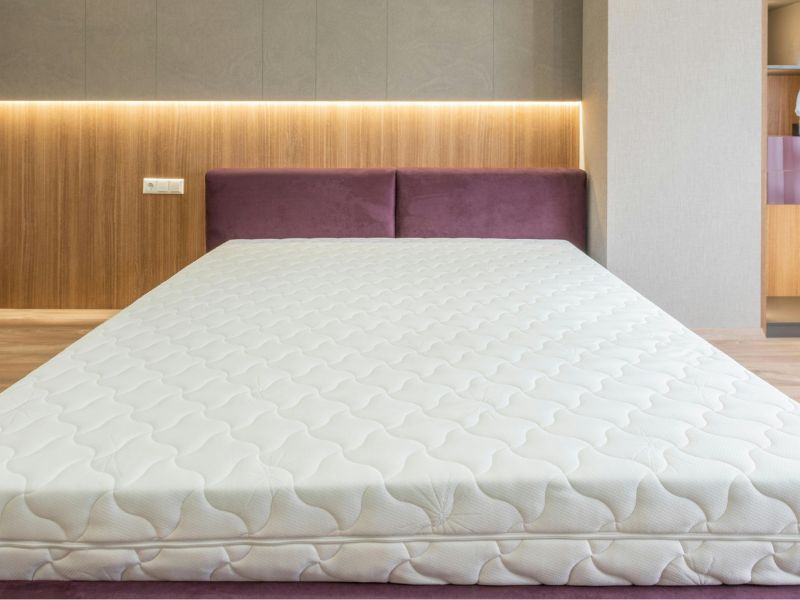
Where to Find Rubber Suppliers in Vietnam?
To make how to import rubber from Vietnam easier, let’s go through a few proven ways to connect with dependable suppliers:
1. Attend Trade Shows for Rubber Products
This is a great chance to meet local rubber suppliers in person. You can see and feel the products yourself, talk directly with manufacturers, and also get a sense of where the industry is heading.
Some notable rubber trade shows in Vietnam are:
- Rubber & Tyre Vietnam: held annually at Saigon Exhibition & Convention Center (SECC), Ho Chi Minh City, usually in June.
- Vietnam International Plastics & Rubber Industry Exhibition: also held annually at Saigon Exhibition & Convention Center (SECC), Ho Chi Minh City, usually in September.
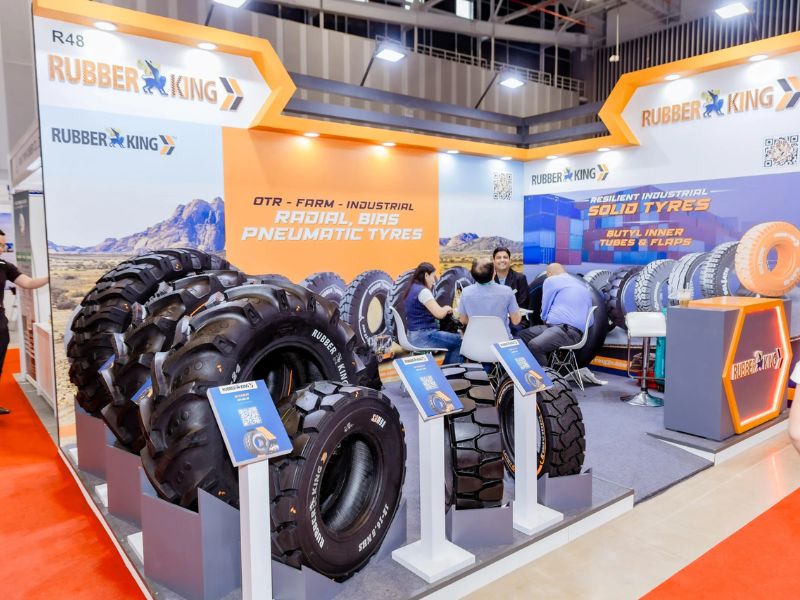
These shows usually take place once a year and last just a few days. So if you are planning a visit, it’s a good idea to keep an eye on announcements from the organizers.
2. Connect with Industry Associations
Associations like the Vietnam Rubber Association or the European Chamber of Commerce in Vietnam can help connect you with suppliers that fit your needs. They’re also a good source of insights into the local rubber industry, including tips on quality and sustainability. Just note that their role is mainly to introduce and share information, while things like supplier audits and export paperwork are still your responsibility.
3. Explore Online B2B Platforms
You can always Google “rubber suppliers in Vietnam,” but the results are usually scattered and not very clear. A better way is to use B2B platforms where you can go straight to manufacturers who actually work with rubber. These sites let you narrow things down by product type, certifications, or supply capacity, which makes the search a lot easier.
Some sites worth checking:
- Alibaba: Plenty of Vietnamese rubber suppliers listed there, but it remains a global marketplace with many intermediaries. That means there should be extra vetting on whether the supplier is a direct manufacturer or a trading company.
- Global Sources: An international directory with verified factories. Many listings include audited suppliers and export histories, which helps reduce sourcing risks. Yet, it’s a global site, meaning suppliers from many countries appear, so locating strictly Vietnamese rubber manufacturers may require extra filtering.
- VinaSources: Focuses solely on Vietnamese manufacturers, great for finding direct producers with verified export licenses and compliance documents. It is particularly useful if you want suppliers filtered by certification like ISO 9001 or industry-specific standards.
Beyond B2B platforms, you can also look directly at some well known rubber suppliers in Vietnam. These include:
- Dau Tieng Rubber Corporation: well-known for high-quality natural rubber
- Casumina: one of Vietnam’s largest tire producers
- Da Nang Rubber JSC: makes technical rubber parts and tires
- Pou Yuen Vietnam: a major footwear manufacturer for brands like Nike and Adidas
- Van Thanh Mattress: specializes in natural latex mattresses with breathable, antibacterial designs
These large and established suppliers can guarantee scale, stability, and export capacity. However, small and medium producers may offer lower prices, flexibility, or niche products but with limited volume and weaker quality control.
How to Import Rubber from Vietnam to EU: Practical Process
Once you’ve found a few promising suppliers in Vietnam, the next step is to make sure they can meet your quality needs and that their products are fully compliant with EU rules.
1. Select and Audit Rubber Suppliers
Start by checking if the supplier has the right international certifications. Labels like ISO, REACH, or FSC/PEFC are a good sign that they follow global standards on quality, safety, and sustainability.
From January 1, 2025, the EU Deforestation Regulation (EUDR) also comes into force. This rule applies to anyone bringing rubber into the EU, and it asks suppliers to:
- Prove that their rubber doesn’t come from land that was deforested or degraded after December 31, 2020
- Follow Vietnam’s local laws in their operations
- Provide geolocation data of the production plots
- Run a Due Diligence System to track and document their supply chain.
Many suppliers will highlight their certifications and EUDR readiness on their websites. Still, it’s always better to double-check. You can hire third-party audit services if you are not familiar with compliance checks. Some B2B platforms also provide verification support for you.

2. Negotiate MOQs, Payments, and the Contract
In Vietnam, most things are negotiable. The key is to keep the tone respectful, but also be clear about what you need. For rubber products, the minimum order quantity (MOQ) depends on the item and whether it needs a custom mold. If a mold is involved, suppliers usually ask for at least 1,000 units.
Lead time also varies. Once a sample is approved, mass production normally takes about two to three weeks. If a new mold has to be made, expect an extra couple of weeks. Here’s a quick snapshot to give you an idea:
| # | Product Type | Common MOQ | Average Lead Time |
| 1 | Car/truck tires | One 20ft container | 15 to 30 days |
| 2 | Running shoes | ~5000 pairs | 30 days or more |
| 3 | Slippers | 500 to 1000 pairs | 20 to 30 days |
| 4 | Inner soles | 2000 to 3000 pairs | ~90 days |
| 5 | Mattresses (ready-made mold) | From 100 pieces | 30 to 45 days |
When it comes to Incoterms, Vietnamese suppliers are usually quite flexible and can work with what suits you best:
- If you’ve shipped by sea before, FOB is a pretty standard option. The supplier takes care of everything until the goods are safely on the vessel in Vietnam, and then it’s your turn to handle things.
- If you’d rather not deal with too much paperwork or logistics, DDP is the easiest. The supplier arranges almost everything, including insurance, and the goods arrive straight at your warehouse.
- CIF is a middle ground. The supplier covers the freight and insurance until the port of arrival, and from there, you take control.
As for payment, it’s best not to pay everything up front. A common setup is: you pay a deposit of about 30 percent, and the rest after shipment or inspection. If the deal is bigger, a Letter of Credit can give both sides peace of mind. It guarantees they get paid once they meet their part of the contract.
And finally, once you’ve agreed, put everything down in writing. Spell out the payment deadlines, delivery schedules, and even what happens if there’s a delay.
3. Verify Product Type and Find CN Code
CN Code is the EU’s Combined Nomenclature code, which is essentially the EU’s version of the Harmonized System (HS) code. The HS code is the international 6-digit classification for goods, while the CN code extends it to 8 digits for use inside the EU.
Think of it as the EU’s way of tagging every product. If you pick the right CN code, you’ll know exactly: what tariff rate applies; and whether extra rules kick in (like safety, health, or environmental standards)
One can look up CN codes in the EU TARIC database or the official Access2Markets portal provided by the European Commission. The following table provides some examples of CN codes for Vietnamese rubber products.
| # | Product Type | HS Code | CN Code | Duty Rate (applied to Vietnam rubber) |
| 1 | New rubber motor car tires | 4011.10 | 4011.10.00 | 0% |
| 2 | Rubber bus or lorry tires | 4011.20 | 4011.20.00 | 0% |
| 3 | Rubber gaskets/seals for civil aircraft | 4016.93 | 4016.93.10 | 0% |
| 4 | Other rubber gaskets/seals | 4016.93 | 4016.93.90 | 0% |
| 5 | Latex mattresses | 9404.21 | 9404.21.00 | 0% |
| 6 | Rubber boots with a steel toe-cap | 6401.10 | 6401.10.10 | 0% |
| 7 | Rubber boots over the ankle | 6401.92 | 6401.92.10 | 0% |
Based on the correct CN code and tariff rate, you can calculate your landed cost and estimate potential profits.
The basic formula for import duty is:
Import Duty = CIF Value x Duty Rate (%) + Other taxes (such as VAT)
Here’s what it means:
- CIF Value: The price of the goods, international shipping, and insurance.
- Duty Rate: The tariff applied to your product. You can look at the table above.
- Other Taxes: Value Added Tax (VAT, usually 20% in many EU countries, but can range from 17% to 27%), and in some cases additional charges such as excise duties or environmental levies if the product falls under special rules. These are statutory taxes collected by customs on behalf of the government.
One tip: If you’re not sure about the classification, don’t guess. Ask your customs office for a Binding Tariff Information decision. It’s like getting an official stamp of approval, so you won’t face reclassification or surprise back taxes later.
4. Prepare Customs Documentation
The most frustrating yet important part is the documents. If you miss or misdeclare something, your shipment can face detention at customs. EU customs are strict, similar to the US, so it is safer to prepare everything in advance.
- Electronic customs declaration (through the VNACCS/VCIS system)
- Sales contract
- Commercial invoice
- Packing list
- Bill of lading
- Certificate of Origin (the EUR.1 form under EVFTA is the most useful)
- Quality certificates or inspection reports (like SGS or Intertek)
- EUDR compliance statement
- Medical or sanitary certificates might be required for things like medical gloves or technical rubber.
In that list, suppliers usually provide the invoice, packing list, certificate of origin, quality certificates, and the EUDR compliance statement. Carriers or freight forwarders issue the bill of lading, the Entry Summary Declaration before the ship arrives, and the Single Administrative Document once it’s at port. Your responsibilities as the importer is to prepare the customs declaration and keep all documents ready for filing.
5. Comply with EU Labelling Rules
To place rubber products on the EU market, you must also follow general product safety and traceability rules. Labels need to be clear, visible, and in a language understood in the destination Member State.
- Product identifier: type, model, batch or lot number for traceability (GPSR 2023/988 requirement).
- Manufacturer details: name, registered trade name or trademark, and contact address (postal + email). If the maker is outside the EU, the EU importer’s details must appear.
- Country of origin: “Made in Vietnam” when required by customs or to avoid misleading consumers.
- Weight and dimensions: net and gross weight, sometimes mandatory for packaging and customs clearance.
- Safety or handling symbols: “Keep dry”, “Fragile”, “Protect from heat” when relevant for rubber storage and transport.
- Compliance marks: CE marking if the rubber product is subject to CE directives (e.g. PPE, toys, machinery parts).
- Chemical/hazard labeling: if the rubber contains regulated additives, CLP Regulation requires pictograms, hazard statements, and precautionary phrases.
6. Arrange Pre-Shipment Inspection, Insurance & Logistics
Before your shipment leaves Vietnam, it’s smart to do a pre-shipment inspection.This includes:
- Checking rubber goods for defects, consistency, appearance, dimensions, and physical tests.
- Verifying packaging, labeling, marking, packing density.
- Confirming quantity, weight, moisture content etc.
- Ensuring load is secured properly for transport.
Then comes insurance. This keeps you covered if anything goes wrong during transport. For rubber goods, you should get all-risk marine insurance covering loss, damage, theft, moisture, fire etc.
For big shipments to the EU, sea freight is often the most practical choice. Routes usually run from Ho Chi Minh City or Hai Phong to major ports like Rotterdam or Hamburg. Transit time typically ranges 20 to 30 days for container shipments.
Remember that public holidays like Tet in Vietnam (usually 7 -10 days off) or long breaks in the EU such as Christmas and New Year (about 3 -5 days off) can extend lead times, so plan your schedule with an extra buffer.
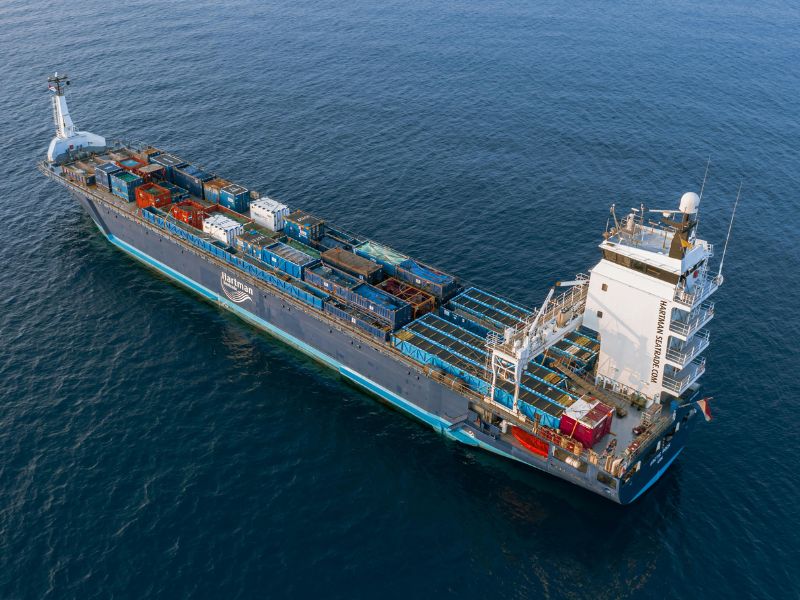
7. Calculate Import Duty and Clear Customs in the EU
Once your shipment arrives in the EU, you’ll need to submit the required documents to customs and pay the import taxes. These costs are part of your landed cost, so calculating them in advance helps you plan your budget better and avoid any surprises.
The formula for VAT is:
Import VAT = Total value of goods x VAT rate of your destination country.
In which, the total value of goods includes CIF value and other costs if available (like agency fees or packaging). For example, in Germany, the standard VAT is 19%. If you import a shipment of rubber tires worth €10,000, you’ll need to set aside €1,900 just for VAT.
Here’s a list of the latest standard VAT rates in EU member states:
| # | Country | VAT Rate (%) |
| 1 | Austria | 20 |
| 2 | Belgium | 21 |
| 3 | Bulgaria | 20 |
| 4 | Croatia | 25 |
| 5 | Cyprus | 19 |
| 6 | Czech Republic | 21 |
| 7 | Denmark | 25 |
| 8 | Estonia | 24 (from July 1, 2025 |
| 9 | Finland | 25.5 (from Sept 1, 2025) |
| 10 | France | 20 |
| 11 | Germany | 19 |
| 12 | Greece | 24 |
| 13 | Hungary | 27 |
| 14 | Ireland | 23 |
| 15 | Italy | 22 |
| 16 | Latvia | 21 |
| 17 | Lithuania | 21 |
| 18 | Luxembourg | 17 |
| 19 | Malta | 18 |
| 20 | Netherlands | 21 |
| 21 | Poland | 23 |
| 22 | Portugal | 23 |
| 23 | Romania | 19 |
| 24 | Slovakia | 23 (from Jan 1, 2025) |
| 25 | Slovenia | 22 |
| 26 | Spain | 21 |
| 27 | Sweden | 25 |
Just hand in your papers to customs, settle the taxes, and once everything is cleared, your goods will be on their way to your warehouse. It often helps to work with a reliable customs broker or freight forwarder, since they can guide you through the shipping and rules, making the whole process much smoother.
Key Takeaways
That concludes our article on how to import rubber from Vietnam to the EU. In summary, to make the process smooth and compliant, your job as the importer is to:
- Find reliable Vietnamese rubber suppliers through trade fairs, industry associations, or B2B platforms.
- Check certificates and confirm compliance with EUDR and other EU regulations.
- Obtain the appropriate CN code and Certificate of Origin to benefit from EVFTA tariffs.
- Plan logistics, insurance, and customs early in order not to be slowed down or face extra costs.
VinaSources is a leading Vietnam-focused B2B platform that makes it simple to connect with reliable rubber manufacturers in the country. Instead of just listing suppliers, we stick with you through the whole process, from sourcing and quality checks to shipping and compliance.
Right now, you’ll find plenty of export-ready rubber products from local suppliers, from rubber gloves to rubber footwear. You can browse by category or simply search “rubber + item” to get what you need.
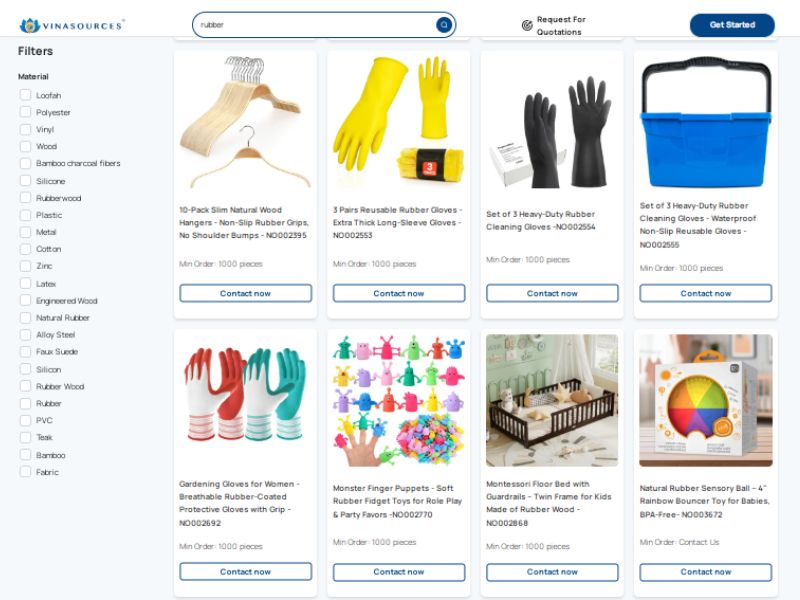
Send us a Request for Quote, and you’ll quickly get verified offers from multiple suppliers.
